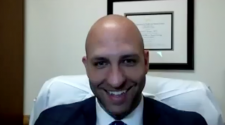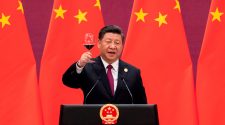The disconnect shows how the bipartisan consensus that emerged in the early days of the pandemic, allowing Congress to produce four relief bills in rapid succession, has largely disappeared. In its place there is partisan finger-pointing and blame-shifting. Trump on Friday dismissed Democrats as “stone cold crazy” and said he couldn’t work with them. Senate Minority Leader Charles E. Schumer (D-N.Y.) said Republicans who failed to act would be “taking the same misguided path as Herbert Hoover,” who failed to pull the nation out of the Great Depression.
The absence of bipartisan discussions means Congress and the White House are unlikely to act anytime soon to offer additional relief to failing businesses, battered state budgets and the newly unemployed despite the devastating news from Friday’s jobs report, which found that more than 20 million Americans lost their jobs in April and the unemployment rate soared to 14.7 percent. Instead, more pressure will build on the Federal Reserve to act on its own.
As some states move to reopen, a philosophical divide has emerged between the two parties about the proper role for the federal government in producing an economic recovery. Many Republicans say they should focus on creating the best conditions possible for people to go back to work. That would include steps such as passing liability protections for businesses and reducing regulations, issues that a group of House Republicans discussed with Trump on Friday at the White House, participants said.
“I think the American people are expecting to bounce back, so what we have to do from a congressional standpoint, an administration standpoint, is create the conditions” for that to happen, said Rep. Mike Johnson (R-La.), chairman of the conservative Republican Study Committee in the House, who participated in Friday’s meeting with Trump.
Democrats, by contrast, say they need to keep pumping money into the economy. House Speaker Nancy Pelosi (D-Calif.) is working to assemble another enormous relief bill with a price tag likely to top $2 trillion and ready for a vote as soon as this coming week.
Building on the $2 trillion Cares Act that Congress passed in late March, the bill is likely to include hundreds of billions of dollars for state and local governments along with an array of other provisions including support for the health care system, coronavirus testing, food stamp recipients and the Postal Service; another extension of unemployment insurance; and some form of direct payments to individual Americans, supplementing the $1,200 checks that were included in the Cares Act.
“This is a reflection of the needs of the American people, and it is consistent with the precedent in the other bills,” Pelosi told reporters on Thursday, as she described the outlines of a massive piece of legislation. She said she was not attempting to negotiate with the White House yet.
“Everything that I just mentioned has bipartisan support in the country. I hope it does in the Congress. But we have to start someplace, and rather than starting in a way that does not meet the needs of the American people, we want to set a standard,” Pelosi said. “And, again, we need a presidential signature, so at some point we’ll have to come to agreement.”
Republicans broadly agree there will be a need to produce another coronavirus relief bill. But they view Pelosi’s approach as a non-starter and insist much of the money they’ve pumped out has yet to reach its intended targets, like hospitals and local governments. Senate Majority Leader Mitch McConnell (R-Ky.) has said it’s time to hit the “pause button” on additional spending and see how the programs already funded are working before committing more federal money to the pandemic, a viewpoint Trump indicated Friday he shares.
“We’re in no rush, we’re in no rush,” Trump said Friday as he opened the meeting with House Republicans. “The Democrats have to do what they have to do. … We want to see what they have, but I can’t say we’re in a rush.
“We were in a rush to get the money out to people. We have gotten the money out,” Trump added. He noted some of the money has stalled because of unwieldy state machinery — an apparent reference to overwhelmed state unemployment systems — and blamed this problem on Democrats.
Unlike the period right before the Great Depression, Trump said, “we’re doing it the right way. We have a lot of great students of finance, I’m one of them, and we’re throwing money at it.”
“This was an artificial turning off of a tremendous economy,” Trump said. “When we turn it back on, which we’ve just started doing, I think it’ll come back blazing.”
That prediction may offer scant comfort to the millions of Americans who have lost their jobs as the coronavirus brought the economy to a halt. But it’s also a reflection of the limited tools left for policymakers if they don’t want to keep spending money, as Republicans are increasingly reluctant to do. In the public portion of Friday’s meeting with House Republicans, Trump offered only two specific policy proposals: cutting the payroll tax, an approach a number of Senate Republicans have already rejected, and cutting or eliminating the capital gains tax, something that would primarily help the wealthiest Americans.
“I think that there will be another bill, I do, and there may be some additional things we need to do,” said Rep. Garland “Andy” Barr (R-Ky.), who also participated in Friday’s White House meeting. He cited allowing rural electricity cooperatives to tap into the small-business Paycheck Protection Program and “targeted additional support” for state and local governments.
But, Barr said, “No amount of bailouts to state and local governments can replace an economy that’s open.”
With Congress and the administration stalled, pressure is mounting on the Fed to do even more to aid the economy. Wall Street is betting the central bank, which has pledged to do whatever it takes to right the economy, will end up rescuing much of corporate America by buying up the debt of “fallen angels” and eventually making interest rates negative for the first time.
Fed Chair Jerome H. Powell was quick to realize the gravity of the pandemic in February and acted swiftly in early March to slash interest rates to zero and buy an unprecedented $2.4 trillion worth of Treasurys and other bonds. So far the Fed has rebuffed calls for negative interest rates, arguing they did not work well abroad.
The Fed is about to buy corporate and municipal debt directly for the first time and make loans to businesses through a new “Main Street Lending” program. It’s a delicate situation because the Fed isn’t supposed to pick winners or losers in the economy, but some companies will benefit more than others from the Fed’s actions.
Some Democrats fear the Fed will rescue heavily indebted oil and gas companies that they argue should go under because the firms took on too much risk before the economic downturn. But other critics argue the Fed is being too cautious. HSBC told clients in a note the Fed’s actions would be “hardly a game changer” for the high-yield corporate debt market since less than 1 percent of debt is likely to qualify for Fed purchases.
Fed leaders are signaling they are open to doing more, including for nonprofits, believing the biggest risk of all is doing too little.
“This is an unprecedented shock to the economy. We had to do things that are really unprecedented,” Loretta Mester, president of the Federal Reserve Bank of Cleveland, said in an interview. “We have to be able to take on more risk than we might have before this crisis.”
Meanwhile, competing visions inside the White House’s policymaking apparatus may hinder a clear response to the economic devastation.
“There’s kind of a jump ball between Jared [Kushner], [Chief of Staff Mark] Meadows and Trump’s eight or nine disparate ideas,” said one person in close communication with the White House, who spoke on the condition of anonymity to discuss the internal dynamics freely.
Many of the White House’s key economic policies in response to the crisis have been driven by a crew of conservative allies viewed skeptically by many mainstream economists.
The threesome consists of the Heritage Foundation’s Stephen Moore, who was among the first to push Trump to “reopen” the economy against the advice of U.S. public health officials; Art Laffer, who recently spoke late at night with Trump about the importance of payroll tax cuts; and their ally inside the government, Larry Kudlow, the former television commentator who became director of the White House National Economic Council.
Earlier this week, senior lobbyists and congressional aides expected the White House to send its priorities to Capitol Hill for the next round of congressional negotiations. That effort appears to be shelved.
White House economic advisers say they will continue to press the payroll tax cut, creating an impasse within the GOP with no clear path forward.
“’What’s ‘Plan B?’ There is no ‘Plan B,’” Moore, a White House economic adviser, said in an interview. “This is the way to win — through a payroll tax cut.”

















